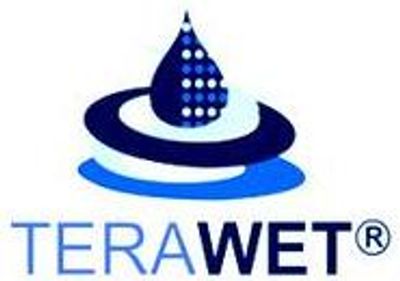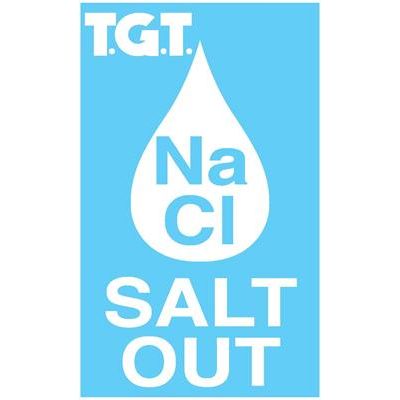

- Home
- Companies
- Terawet Green Technologies, Inc. (TGT)
- Products
- Salt Out - Liquefied Acrylamide ...

Salt Out - Liquefied Acrylamide Copolymer
What is it? Salt Out is a liquefied acrylamide copolymer with proprietary additives that displace salts in the soil. It also contains elements that will rapidly improve the color and vigor of the turf that has been affected by these salts. Programmed use of Salt Out™ reduces or eliminates salinity stress in plant growth by sequestering sodium and chloride ions from penetrating plant root tissues. These conditions usually occur due to the buildup of salts as a result of fertilizer applications, irrigating with reclaimed, well or pond water, as well as salts deposited by ocean mist. Salt Out™ coats the plant roots disallowing the update of the salts thereby enhancing nutrient uptake resulting in rapid improvement and stabilization of turf color. Salt Out™ also contains a surfactant to ensure proper soil penetration and even moisture distribution throughout the root zone. It reduces water usage by 20% or greaterApplying Salt Out on a programmed basis will remove salts from the root zone and coat the plant roots protecting them from sodium uptake from the irrigation water and salt deposits resulting from heavy fertilizer applications. In the dry season when there is an insufficient rainfall to assist in the leaching of salts from the soil, it will prevent the upward migration of harmful salts from being deposited in the root zone. In addition, it coats the roots and prevents sodium salts from interfering in nutrient uptake.
Salt Out is ideal for use with irrigation practices using reclaimed and effluent water or sodium rich well and pond water.
Salt Out promotes a healthy transition from cool season to warm season grasses. Programmed use will lower the salinity level in the soil and promote rapid recovery from salt damage, restoring plant color, promoting nutrient uptake and improving the plants ability to withstand various stress conditions.
Salt Out should be used in areas that are affected by salts from roadway and walkway salting during the winter months. Also, use Salt Out after salt water intrusion due to coastal storms and to correct conditions resulting from ocean over spray.
Salt Out is an earth friendly quality product that is guaranteed to perform as stated.
Programmed use of Salt Out reduces or eliminates salinity stress in plant growth by sequestering sodium and chloride ions from penetrating plant root tissues. These conditions usually occur due to the buildup of salts as a result of fertilizer applications, irrigating with reclaimed, well or pond water, as well as salts deposited by ocean mist.
Salt Out coats the plant roots disallowing the update of the salts thereby enhancing nutrient uptake resulting in rapid improvement and stabilization of turf color.
Salt Out also contains a surfactant to ensure proper soil penetration and even moisture distribution throughout the root zone. It reduces water usage by 20% or greater.
Treatment Program:
Initial applications: Apply 4 gallons per acre or 12 fl oz per 1000 sq. ft.
Re-apply at 6-8 fl oz per 1000 sq. ft. every two weeks until plant conditions improve.
Maintenance use: Apply 6-8 fl oz per 1000 sq. ft.
A light syringe (1/8”) of water after each application is required.
Salt Out can be applied through irrigation and fertigation systems.
Salt Out is highly polar (very conductive) an electrical conductivity measurement of the soil (EC’s) for TDS in not appropriate. The limit for turf EC’s is around 2-6 depending on turf type (if using conversion 1 mmhos/cm=1ds/m=640 ppm total salts) and varies with different food crops and trees. With Salt Out the EC’s paste is elevated because of the introduction of electropositive radicals which can drive the EC’s above 10 due to it’s conductivity, especially if it still very active. Therefore, TDS meter can be used to determine if there is a problem and then a tissue test with a Mass Spectrometer in a lab should be run. Tissue and soil analysis should also be conducted to determine levels of chlorine.
